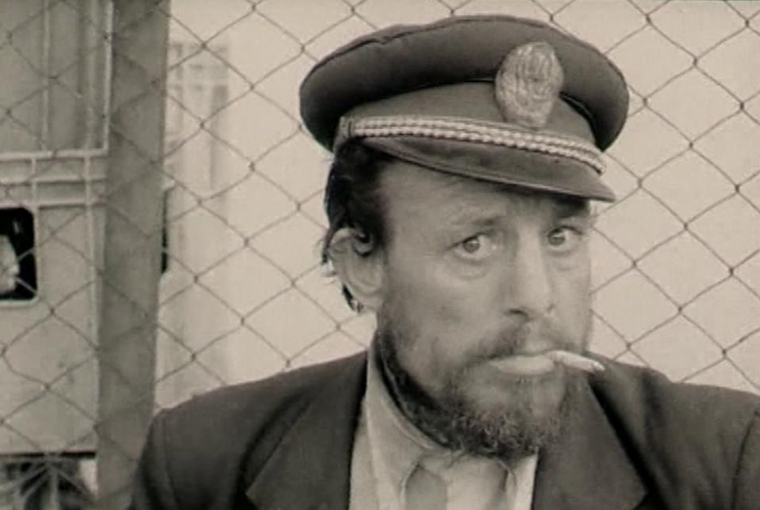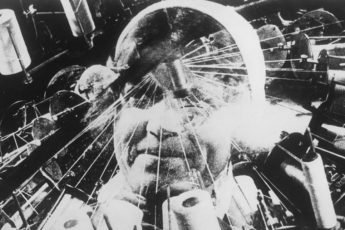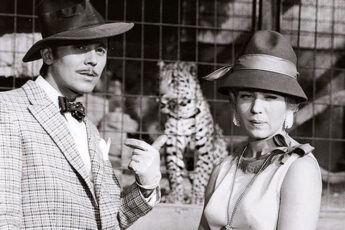Filming the Working Class
Ovidiu Bose Pastina’s One victim and many culprits (Mai mulţi vinovaţi şi o victimă, 1983)
Vol. 18 (June 2012) by Alina Popescu
Ovidiu Bose Pastina is one of the most interesting Romanian documentary filmmakers who began his career in the communist period, at the Documentary Film Studio, Sahia. Today, the Sahia name doesn’t mean much in the Romanian cultural memory, although the hundreds of annual productions were broadcasted on TV and staged in theatres. This is not surprising given that Sahia’s identity was closely linked to propaganda filmmaking, unlike other similar institutions, such as the Béla Balázs studio in Hungary. Its existence is closely connected with the rise and collapse of the communist regime, the last productions being about the Romanian Revolution.
However, some individuals and even a generation, that of the ’80s, of which OBP is part of, deserve a closer review. Directors such as Laurentiu Damian, Copel Moscu or Sabina Pop, brought new energies in the Romanian documentary film of the last communist decade. Their formal and thematic experimenting were different from most productions that were usually homogeneous, “safe”, recycling the same images and speeches about the great achievements of the communist party. At the same time it needs to be noted that documentary filmmakers had greater freedom than those of fiction films. From this point of view, one of the activities that allowed them to innovate was making movies commissioned by and for various enterprises.
OBP’s short film, One victim and many culprits (1983), is a “health and safety” production that nevertheless managed to be more than a film on “conscience awakening” or an educational film about the lack of accountability in Communism and the accidents that it can cause.
The beginning of the film is a surprising cinematic moment, whereby the camera, placed at ground level, moves ahead in a travelling and steadily approaches a scene where an accident takes place. This instant, supported by an incredibly modern music, prepares the viewer for the idea that what follows is not a film about workers in the classical style of Sahia, but a film about the relationship between the one that films and those who let themselves be filmed. The film seems to be made of this forced relationship between some and others, a relationship established through a kind of tacit convention: you pretend that you are guilty of an accident, I pretend to play the inquisitor role and that I make a film of social utility.
OBP’s camera surprises the artificiality of this relationship, shooting spontaneous gestures and expressions that suggest the discomfort of being filmed. The workers’ behaviour, filmed without a prior “mise en scène”, does not express the supposed enthusiasm of the ruling class. Their personality and individuality do not matter; they are there to ensure the continuity of the industrial process, they are interchangeable. The workers that we see are anonymous crushed by the monumental factory or by the collective group, and are, properly speaking, shadows. In fact, very rarely we see close-ups of people and when that happens, there are always set elements that distract or obstruct the direct relationship with the camera: windows, protection masks carefully placed on a table, the technical equipment of the film crew.
The same disconnection happens in the speech and is visible for example in the take in which a factory official gives a ready-made version of the accident, but without the viewer being able to connect the discourse with the person. The other “witnesses” that we see are making efforts to identify culprits, mistakes and to deliver rational explanations about an incident that should have a clear causality. The absurdity of this process becomes hilarious when the people agree that the incident should be blamed on a person whose bus did not leave on the right time.
OBP seems to excel at this technique of counterpoint, through which the image, music and words are disconnected one from the other, each of the three elements functioning as a critical comment on the other. This achievement is notable taking into account that in most Sahia films, all these elements are usually forming a compact dispositive: a voice off is deciphering the sense of the image for the audience, while the music is revealing the emotions of the message.
Watched today, the OBP’s film is of an incredible complexity and freshness by its dynamic editing, the symmetry of compositions, the dialectic between static and moving, by how he studies the industrial landscape aesthetics and by the way he uses soundtrack.
The film ends with images from an institution, perhaps a hospital, where lonely figures are fixing the camera. In this final sequence where the light goes out and everything is static, the image of a shaking image on a TV screen becomes the troubling signal that something is (going to turn) wrong.




Leave a Comment